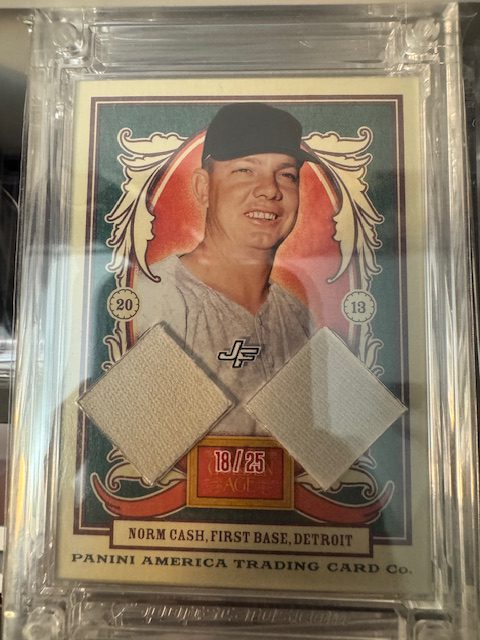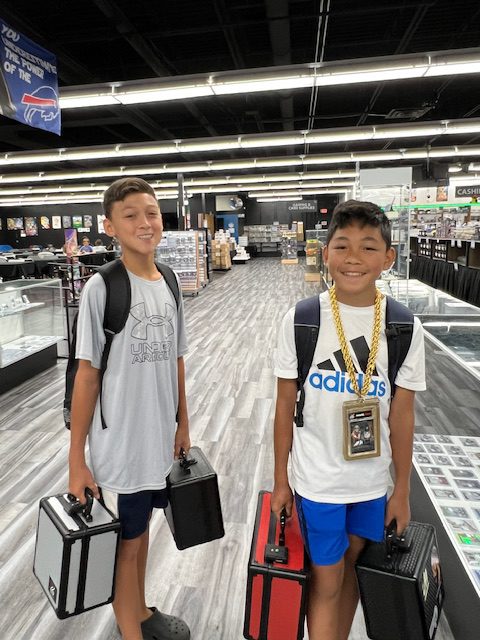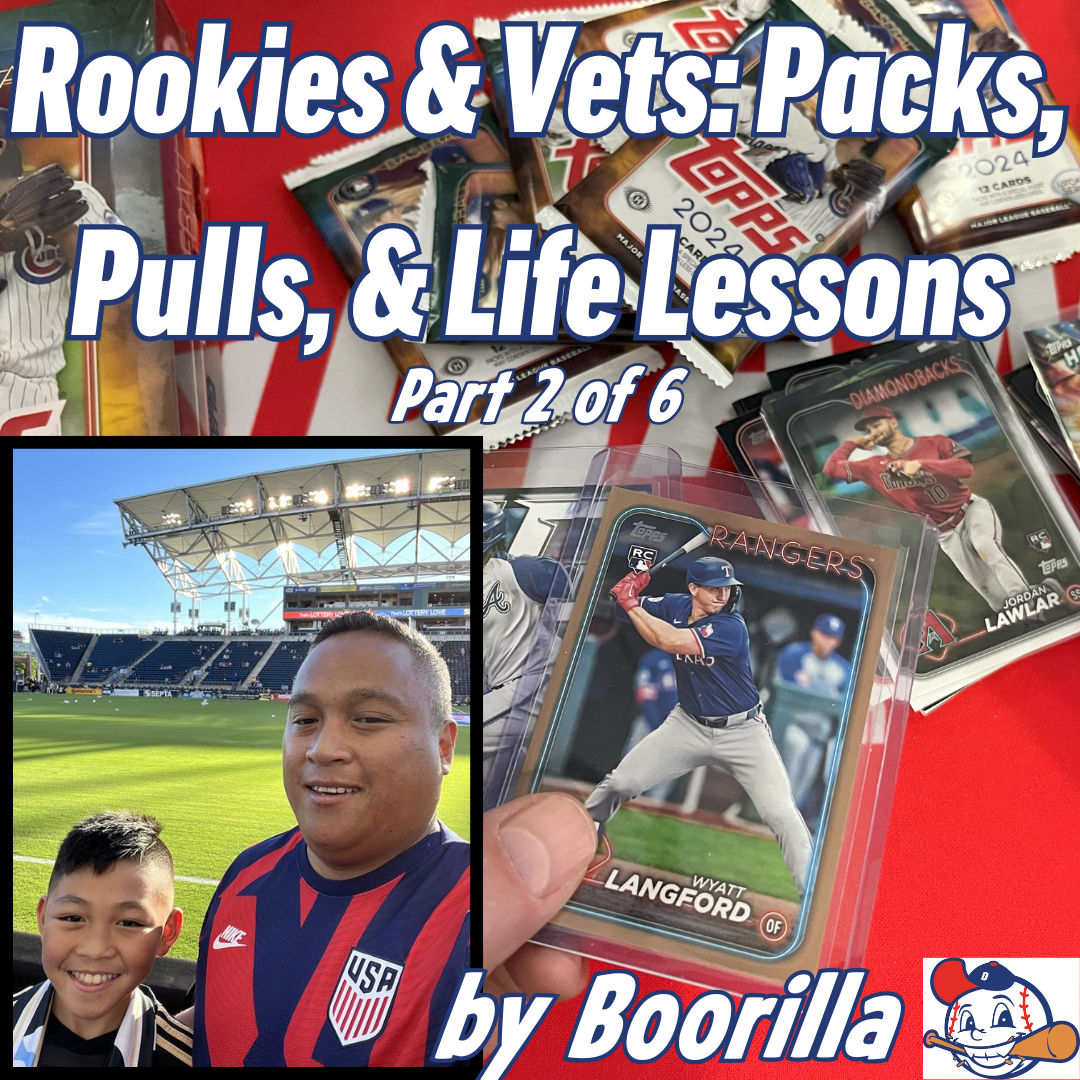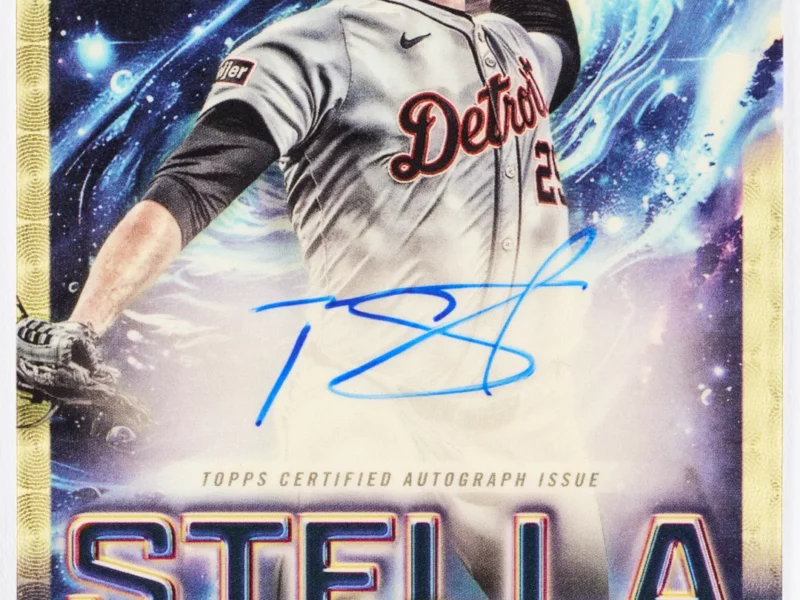Part 2 – LCS? More like LCYes!
In my early days of collecting, walking into a card shop wasn’t something my friends and I even considered. The idea of a store dedicated solely to buying, selling, and trading sports cards felt almost mythical. In fact, we only knew of one adult in our neighborhood who was an avid collector, and he was our go-to person for trades. Looking back, I cringe at the memory of how often we knocked on his door relentlessly, clutching our worn-out Jose Canseco Gold Cup cards, pleading for trades. If I’m being honest, I can’t even remember his name, but I do remember his kindness. He always answered the door, always entertained our trades—no matter how lopsided they were in our favor.
Then one summer, we learned about a sports card shop that had opened about five miles from our neighborhood. To us, it might as well have been another planet. But the lure was irresistible. My friends and I packed up our binders and set out on what felt like an odyssey—a sweltering July afternoon spent trekking through wooded paths, climbing chain-link fences, and crossing train tracks, all in pursuit of what we imagined would be a collector’s paradise. The danger was real, but to us, it was going to be worth it. We hadn’t planned well; maybe one bottle of water between the five of us. But we all carried our binders, and I carried my prized Shaq TV card. At 12 years old, the thought of selling that card for $100 was life-changing. We had grand plans—after making our fortune, we’d swing by the Giant Eagle, grab a case of cold pop, and toast our newfound riches.
Imagine our disappointment when we finally arrived—the shop was much smaller than we had imagined, and behind the counter stood two little old ladies. They had no idea who Shaquille O’Neal was, let alone any interest in buying my card for $100. That was the day I learned a tough lesson: the right card needs the right buyer—and that day, my buyer was nowhere to be found.
Rediscovering the LCS
Fast-forward 30 years, my son Maddox and I decided to tempt fate again. This time, I had Google on my side. A quick search turned up several card shops within a short drive. We weren’t bringing any cards—just curiosity. I picked a shop with a name that seemed perfect: The 7th Inning Stretch.
From the moment we walked in, we knew this was different. Glass display cases lined the length of the shop, brimming with sports cards, and stacks of unopened boxes lined the shelves, waiting to be ripped. Now this—this was the mecca I had searched for years ago. A kingdom of sports cards, complete with a warm and welcoming owner who took the time to talk to us about the hobby.
Dwayne, the owner, greeted us like old friends, like we belonged there. I watched as a parade of parents and kids streamed through those doors, all greeted by Dwayne as if they were family. It didn’t take long before The Stretch became what the hobby now calls our LCS—Local Card Shop. We weren’t just customers; we were part of it – and we were loyal to Dwayne and our LCS.
The Jersey Fusion Lesson
On our first trip to The Stretch, something immediately caught my eye—something I had never seen in my youth as a collector. It was a Michael Jordan card, embedded with a swatch of his iconic red No. 23 Bulls jersey. For collectors my age, Jordan is the holy grail, and seeing a piece of his actual game-worn jersey encased in a card was mesmerizing.
Then I saw more—Kobe Bryant, Shaquille O’Neal, Larry Bird. An endless stream of legends. And modern players too—Jalen Hurts, Josh Allen, Patrick Mahomes. It was as if I had stumbled upon treasures beyond imagination. I was stunned, transported back to my childhood self, standing in awe.
I tried explaining to Maddox how rare these types of cards were—how even owning just one of these cards was an impossible dream when I was his age. But here we were, staring at case after case filled with them.
Sensing my excitement, Dwayne nudged me toward the hottest new product in the hobby—Jersey Fusion. A single card, sealed in a sleek case, each one containing a piece of game-worn memorabilia. Without hesitation, I bought a box—$30 for one card, more than I’d ever spent on a single pack.
We took it home, eagerly anticipating our pull. Would it be Jordan? Kobe? We ripped the pack, and found…Norm Cash.

Our first Jersey Fusion – Norm Cash
At the time, Maddox and I had no idea that patch and relic cards were now common in sports card collecting. We didn’t realize they weren’t nearly as rare as I had imagined. We went back a couple more times, determined to hit a Jordan. What we eventually learned was Jersey Fusion cards weren’t particularly desirable in the modern hobby. Topps and Panini had been making relic cards for years. Even if we had pulled a Jordan or Kobe, they wouldn’t have held much value—and, more importantly, they were impossible to trade or sell.
I’d love to say it was a thrill, but I realized we had made a rookie mistake. Jersey Fusion wasn’t the goldmine we thought it was. The market was dominated by Panini and Topps, and we had overlooked the most important rule: research before you buy.
I’ll never forget when we took the Norm Cash card back to Dwayne to see if he was interested in buying it. I caught him out of the corner of my eye, subtly shaking his head no to one of his employees who was trying to value our card. When he turned us down, he suggested we try eBay—maybe someone in Detroit would be interested. Because, after all, for the right buyer, it could be the right card.
Lessons from the LCS
Maddox and I learned from that mistake. Dwayne taught us how to look up product checklists before buying. He explained the difference between a Blaster Box, a Mega Box, and a Hobby Box. He showed us which boxes had guaranteed autographs and which were just a roll of the dice. He helped us transition from storing cards in binder sheets to sleeving and top-loading the valuable ones, even using magnetic holders for our prized pulls.
A couple of years later, The Stretch closed its retail location, with Dwayne opting to sell exclusively online. But I’ll always be grateful for the time he spent with us—teaching us the ropes, showing us how to research comps on eBay and 130Point, explaining the 70% rule, and even teaching Maddox how to haggle. He had given Maddox and me something priceless—more than just collecting tips, but an understanding of the hobby, the thrill of the chase, and the joy of the community. I’ll always consider The Stretch our LCS, even if it’s no longer around physically. The lessons we learned there set Maddox up for his future successes in the hobby.
The Tradition Continues
These days, I like to think that Maddox and I are seasoned pros when it comes to navigating card shops. He’s the brains of the operation, the expert on which cards to chase and which boxes to buy. I’m the muscle, lugging multiple card cases behind him as he meticulously inspects the display cases, formulating a trade plan for the card he’s targeting.
We understand that the price tag on a card is rarely set in stone—haggling is part of the game. In many cases, the actual market value of a card may be lower than the shop’s listed price, and a reasonable offer backed by recent comps can often lead to a deal. If we’re in a shop during that sport’s season, he’ll ask me about a player’s performance, knowing that card values can fluctuate weekly based on how they play.
We frequently attend Kid’s Trade Days and Hobby Rip Nights at local shops so he can negotiate deals with other collectors. Everything we learned from Dwayne, I now see him put into practice. My shy and soft-spoken kid transforms into a sharp negotiator the moment he steps into a card shop. He knows exactly what he wants and what it’s worth. Ask him what he wants for dinner, and you’ll get a shrug. But when asked if he’s willing to trade his Saquon Barkley rookie Downtown for a Jayson Tatum Kaboom, he doesn’t hesitate. He’ll confidently break down a dozen reasons why Saquon’s value is on the rise and exactly how many additional cards would need to be included to make the trade fair.
Whenever we travel, Maddox and I always make a point to visit local card shops. Driving through New England, we stopped by the Card Vault (now partly owned by Tom Brady). In Buffalo, we visited Dave & Adam’s. Even around Philly, we make the rounds—Wheelhouse, Nash Cards, Booth’s Corner.

Maddox and his cousin at Dave & Adam’s in Buffalo
These days, Maddox loads up his card cases, I’ll haul them to the car, and we head out on another adventure together. The journey might be easier now, the dangers fewer, but the feeling? That feeling of possibility, of excitement, of finding something just right—that hasn’t changed a bit. We’re still in search of that same wondrous magical place…just like my friends and I did 30 years ago.





